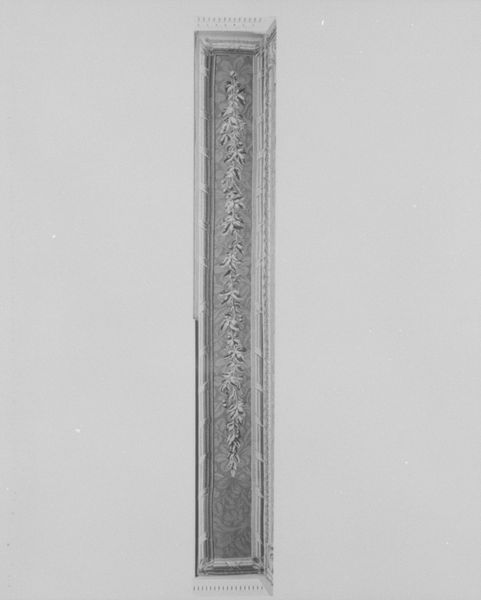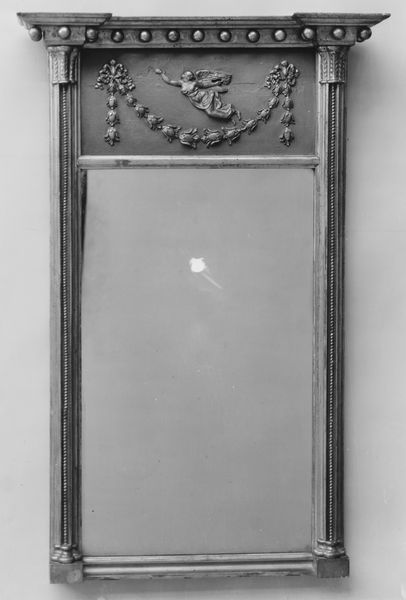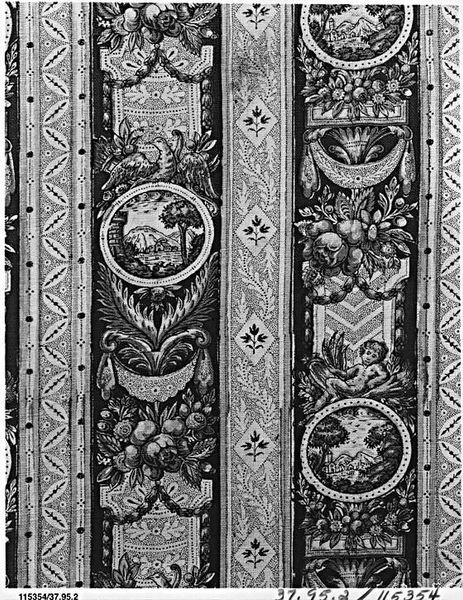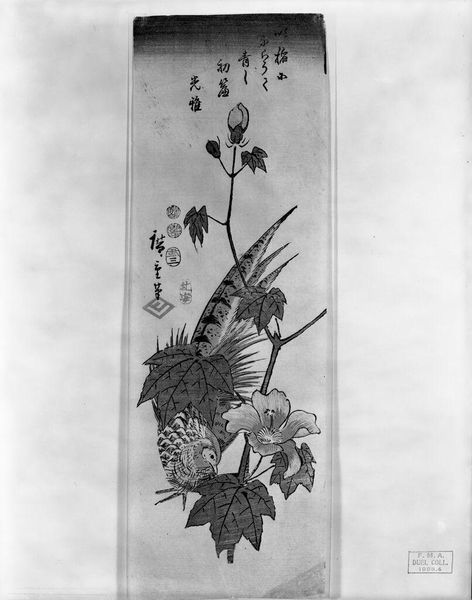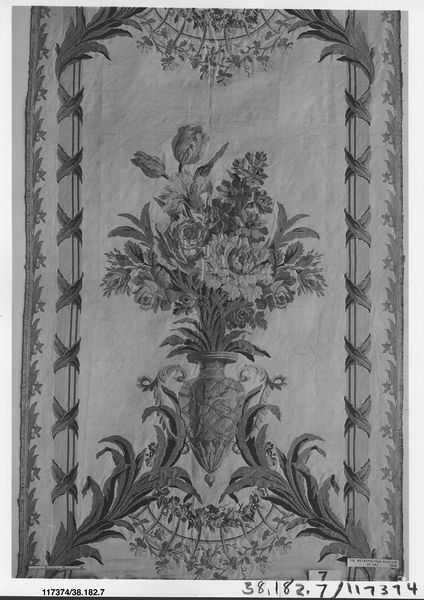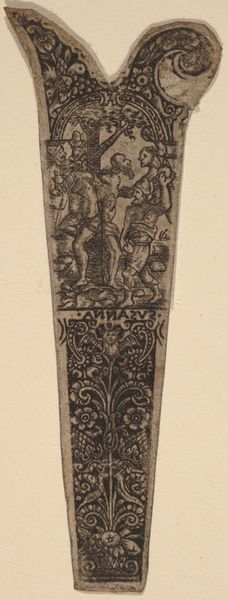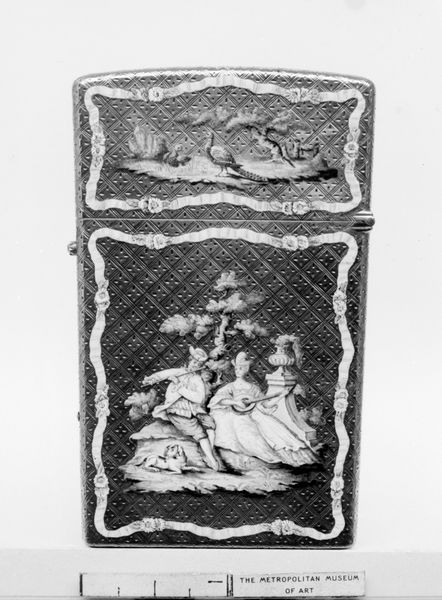
painting, sculpture, architecture
#
painting
#
sculpture
#
sculpture
#
decorative-art
#
architecture
#
rococo
Dimensions: Each:: 9 ft. 11 in. × 33 1/2 in. (302.3 × 85.1 cm)
Copyright: Public Domain
Editor: This is "Vertical Panels with Garland," dating from 1758-1771, by Jacques Germain Soufflot, currently housed at The Met. The panels seem so decorative and delicate, especially with that beautiful garland of flowers. What visual language can we decipher from this piece? Curator: Indeed. The garland itself is laden with symbolism. In many cultures, flowers represent transient beauty, rebirth, and celebration. Notice how it vertically bisects the panel. It creates a kind of axis, perhaps symbolizing a connection between earthly beauty, represented by the garland's base, and something more…divine or aspirational at its apex. Editor: Divine? What do you mean? Curator: The garlands, especially during the Rococo period, often suggested abundance and prosperity but also, the fleeting nature of life’s pleasures. The upper portion contains an almost altar-like setting, contrasting sharply with the more earthbound flowers towards the bottom. Doesn’t the delicate symmetry, bordering on excess, remind you of stages? A theater, perhaps? Editor: I do see the stage aspect. So, it is less about the individual flowers and more about their arrangement, what they point towards? Curator: Precisely! Consider the cultural context: Rococo was a style favored by aristocracy. Garlands signaled a cultivated enjoyment of life, and an appreciation for beauty as status. The ephemeral quality acts as a subtle reminder of their mortality, layered in all their opulence. Editor: So the beauty, carefully presented, tells a bigger story, doesn't it? A story about taste, privilege and the fleeting nature of it all. Curator: Absolutely. Art speaks in codes, and understanding these symbols opens a window into the past. Each element connects to build a complex story.
Comments
No comments
Be the first to comment and join the conversation on the ultimate creative platform.
